Selecting the optimal AI model for your project can be a daunting task. With a plethora of options available, each boasting unique strengths and weaknesses, the choice can significantly impact the outcome of your work. This comprehensive guide will empower you to navigate the complexities of choosing the right LLM, ensuring you make an informed decision aligned with your specific goals.
In this article, we will delve into the intricacies of various AI models, meticulously examining their advantages and disadvantages. Our analysis will cover:
- Creative Prowess vs. Precision Accuracy: We will contrast models excelling in imaginative content generation with those prioritizing factual correctness.
- Cost-Effectiveness and Feature Depth: We will explore the trade-offs between budget-friendly options and models offering advanced capabilities.
- Real-Time Information Access vs. Contextual Understanding: We will compare models capable of tapping into up-to-date data with those specializing in maintaining extensive contextual knowledge.
- Ethical Considerations and Content Limitations: We will shed light on the varying levels of content moderation enforced by different models, empowering you to choose one that aligns with your ethical standards and project requirements.
By providing a thorough understanding of each model’s strengths and weaknesses, this guide will equip you to make a confident choice when choosing the right LLM, maximizing the effectiveness of your AI-powered endeavors.

GPT Models (GPT-3.5, GPT-4): Unleashing Creativity and Accuracy
Generative Pre-trained Transformer (GPT) models, particularly GPT-3.5 and its successor GPT-4, have revolutionized the field of AI with their remarkable language processing capabilities. These models, created by OpenAI, excel in generating human-like text, translating languages, writing different kinds of creative content, and even coding.
In this section, we will delve into the strengths and weaknesses of GPT-3.5 and GPT-4, providing insights into their:
- Exceptional Creativity: We will showcase their ability to generate innovative ideas, craft compelling stories, and produce captivating marketing copy.
- Accuracy and Reliability: We will examine their proficiency in handling factual information, providing accurate summaries, and answering complex questions.
- Contextual Understanding: We will analyze their capacity to maintain long-term context, enabling them to engage in coherent conversations and generate cohesive content over extended periods.
By understanding the nuances of GPT-3.5 and GPT-4, you can harness their power to enhance your projects, whether it’s generating engaging content, developing innovative solutions, or conducting in-depth research.
Strengths
- Creativity and Idea Generation: The GPT models shine when it comes to creativity. These models are exceptional at generating a wide array of ideas, making them ideal for brainstorming sessions, content creation, and any task where innovative thought is valued. Their ability to use descriptive language enhances the quality of output, providing rich and vivid text that can capture readers’ attention.
- Adaptation to Personas: One of the remarkable capabilities of the GPT models is their proficiency in adapting to different personas. This makes them highly versatile for tasks ranging from writing character-driven stories to crafting messages that resonate with specific audiences. Their ability to understand and mimic various writing styles and tones allows for customized outputs that feel tailored and personal.
Weaknesses
- Prone to Hallucination: With great creativity comes the challenge of keeping facts straight. The GPT models, while inventive, can sometimes “hallucinate” – a term used to describe when the AI fabricates facts or details that were not part of the input information. This tendency can be problematic in situations where accuracy and adherence to factual details are paramount.
- Risk of Inaccuracy Due to Creativity: The very creativity that makes the GPT models appealing can also be a double-edged sword. In their quest to generate engaging and innovative content, these models might introduce elements that, while creative, stray from the original intent or accuracy. This could lead to outputs that require additional fact-checking and revisions to ensure reliability.
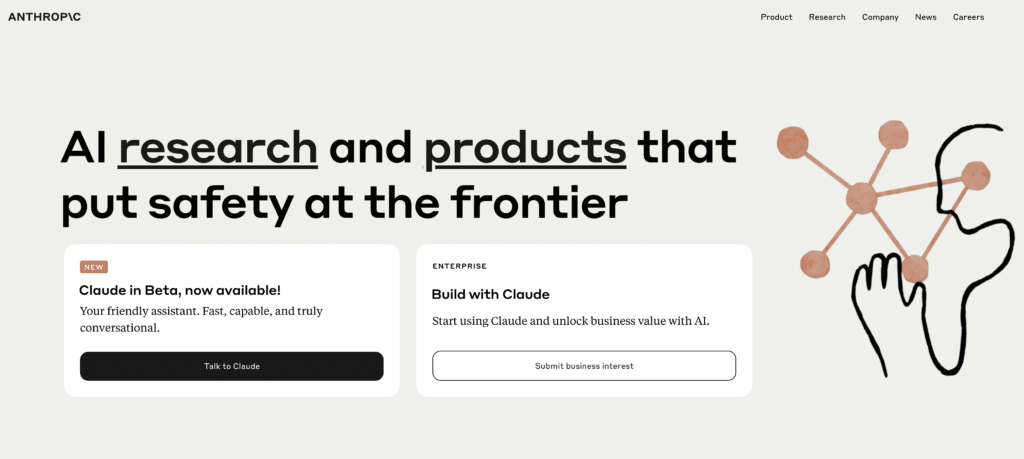
Claude: Striking a Balance of Accuracy and Adaptability
In the realm of AI language models, Claude stands out as a formidable competitor to GPT-3.5 and GPT-4. Developed by Anthropic, a research company focused on responsible AI development, Claude prioritizes accuracy, safety, and reliability.
In this section, we will explore the strengths and weaknesses of Claude, shedding light on its key attributes:
- Accuracy and Factual Consistency: We will delve into Claude’s exceptional ability to provide precise and well-researched information, minimizing the risk of factual errors.
- Balanced Creativity: While not as unrestrained as GPT models, Claude demonstrates a remarkable balance between creativity and adherence to factual accuracy, making it suitable for a wide range of tasks.
- Adaptability and Personalization: We will examine Claude’s proficiency in adapting its responses to different user preferences and contexts, personalizing the user experience.
Understanding the strengths and weaknesses of Claude will empower you to leverage its capabilities effectively, whether you’re seeking reliable information, generating content that resonates with your audience, or engaging in natural and informative conversations.
Strengths
- Accuracy and Reliability: Claude stands out for its commitment to accuracy and reliability. Designed by a team focused on minimizing errors, this model is less prone to hallucination than its GPT counterparts. It’s an ideal choice for tasks where precision is critical, such as technical writing, data analysis summaries, and any application where factual integrity is non-negotiable.
- Extended Context Length: With double the context length of GPT-4, Claude can handle much longer inputs. This capability allows for more in-depth conversations and analyses, making it particularly effective for complex discussions that require retaining a large amount of detail. The extended context length enhances Claude’s ability to maintain coherence over longer texts, improving the quality of dialogue and narrative outputs.
Weaknesses
- Reduced Creativity: When compared to the GPT series, Claude’s focus on accuracy comes at the expense of some creativity. This model might not be as dynamic in adapting to different personas or generating the wide variety of ideas that GPT models excel at. While still capable of creative output, Claude may produce results that feel somewhat constrained for tasks that prioritize novelty and imaginative flair.
- Less Dynamic Persona Adaptation: Though Claude is capable of adopting different writing styles and tones, its adaptability is not as pronounced as that of the GPT models. This slight limitation could impact tasks requiring nuanced shifts in voice or perspective, potentially making Claude a less ideal choice for projects heavily reliant on character-driven narratives or highly personalized content.
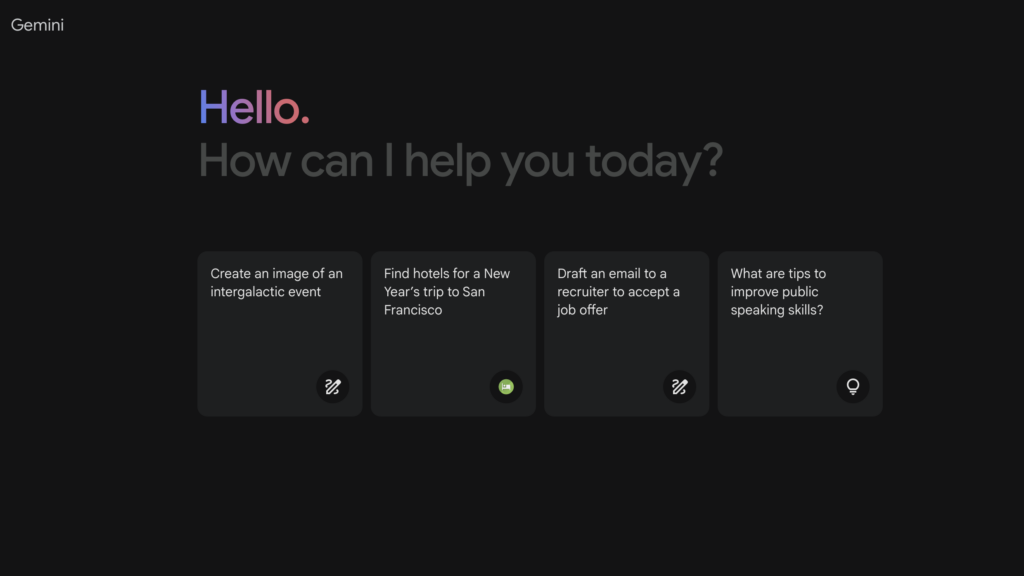
Gemini Pro (Google): A Cost-Effective Alternative with Advanced Capabilities
In the competitive landscape of AI language models, Gemini Pro has emerged as a compelling choice for those seeking a balance between cost-effectiveness and advanced capabilities. Developed by Google, Gemini Pro offers a comprehensive suite of features that cater to a diverse range of needs.
In this section, we will explore the strengths and weaknesses of Gemini Pro, providing insights into its key attributes:
- Cost-Effectiveness: We will delve into the cost advantages of Gemini Pro compared to other models, making it an accessible option for businesses and individuals.
- Versatility and Wide Applicability: We will showcase Gemini Pro’s proficiency in handling a variety of tasks, including content generation, summarization, translation, and question answering.
- User-Friendliness and Ease of Integration: We will examine Gemini Pro’s intuitive interface and seamless integration capabilities, making it accessible to users with varying levels of technical expertise.
Understanding the strengths and weaknesses of Gemini Pro will empower you to make an informed decision about whether it aligns with your project requirements and budget constraints. Whether you’re looking to enhance your content creation process, streamline your research, or automate tasks, Gemini Pro offers a compelling value proposition.
Strengths
- High Intelligence and Capabilities: Gemini Pro, developed by Google, closely matches GPT-4 in terms of intelligence and breadth of capabilities. It distinguishes itself by producing outputs that are not only intelligent but also remarkably versatile, handling a wide range of tasks from complex problem-solving to generating engaging narratives. Its sophisticated algorithms ensure that outputs meet high standards of relevance and coherence.
- Verbosity and Detailed Outputs: Unlike models that might prioritize conciseness, Gemini Pro tends to produce more verbose outputs. This characteristic makes it particularly useful for applications where detail is key, such as in-depth articles, comprehensive reports, and rich storytelling. The additional verbosity ensures that no stone is left unturned, providing readers with a fuller understanding of the subject matter.
- Cost-Effectiveness: One of the most appealing aspects of Gemini Pro is its cost-effectiveness. Offering near GPT-4 level performance at a fraction of the price, it represents a value proposition that is hard to ignore. This makes advanced AI capabilities more accessible to a wider range of users, including startups and individuals with limited budgets.
Weaknesses
- Potential for Over-verbosity: The very strength of Gemini Pro in producing detailed outputs can sometimes become a weakness. The model’s tendency towards verbosity might lead to unnecessarily lengthy or tangential content in scenarios where brevity and precision are valued. Users may find themselves needing to edit down the output to ensure conciseness and focus, depending on the application.
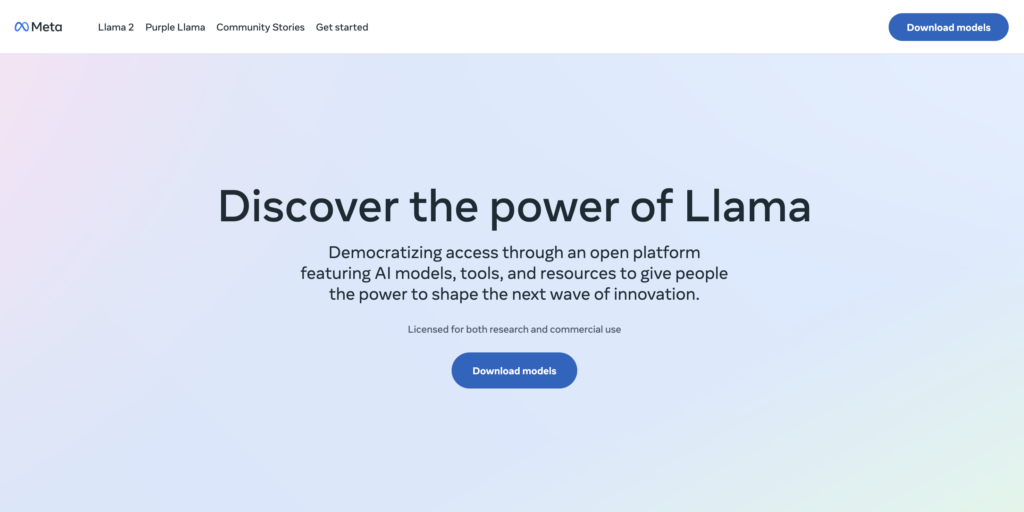
Llama (By Meta): A Cost-Effective Contender with Real-Time Information Access
In the ever-evolving landscape of AI language models, Llama has emerged as a promising contender, offering a unique blend of capabilities at a cost-effective price point. Developed by Meta, the company behind Facebook and Instagram, Llama stands out for its ability to access and incorporate real-time information into its responses.
In this section, we will explore the strengths and weaknesses of Llama, shedding light on its key attributes:
- Real-Time Information Access: We will delve into Llama’s ability to connect to the internet and retrieve up-to-date information, enabling it to provide responses that reflect the latest developments and events.
- Cost-Effectiveness: We will examine Llama’s cost advantages compared to other models, making it an accessible option for businesses and individuals with budget constraints.
- Trade-Offs and Limitations: We will discuss the potential trade-offs and limitations associated with Llama’s focus on real-time information access, ensuring you have a balanced understanding of its capabilities.
Understanding the strengths and weaknesses of Llama will empower you to assess whether it aligns with your project requirements and budget. Whether you’re seeking an AI model for tasks that demand access to the most recent information or are looking for a cost-effective solution, Llama offers a compelling value proposition.
Strengths
- Cost-Effective Alternative: Llama serves as a cost-effective alternative, positioned to offer capabilities similar to GPT-3.5 but at a reduced cost. This aspect makes it an attractive option for those on tighter budgets, seeking a balance between performance and affordability. It’s suitable for a range of tasks that require decent AI capabilities without the higher price tag associated with the latest models.
Weaknesses
- Potential Redundancy: With the advent of more advanced and similarly priced models like Gemini Pro, Llama faces a challenge in justifying its place in the lineup. Its strengths, while notable, may be overshadowed by other models that offer greater intelligence, versatility, or cost-efficiency. This redundancy raises questions about Llama’s long-term viability and relevance in a rapidly evolving AI landscape.
- Limited Advancement: While Llama is a competent model, it doesn’t bring significant advancements or unique features that distinguish it from competitors. In comparison to newer models that boast extended context lengths, higher creativity, or specialized capabilities, Llama may appear somewhat lackluster. This limitation could make it less appealing for users seeking the cutting edge in AI technology or specific functionalities not adequately addressed by Llama.
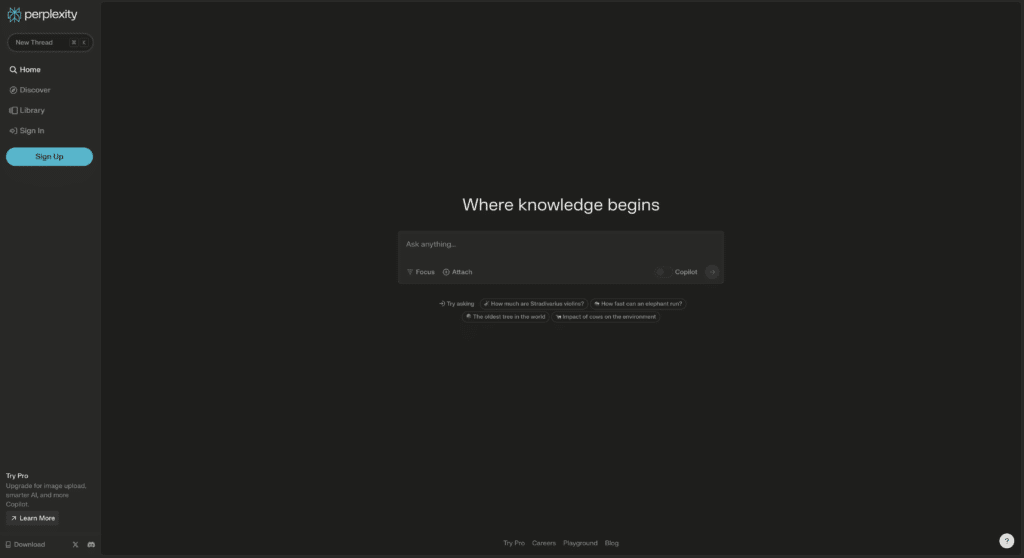
Perplexity AI Models (Perplexity): Harnessing the Power of Web Knowledge
In the realm of AI language models, Perplexity AI stands out for its unique approach to information processing. Perplexity’s models possess the remarkable ability to access and leverage vast amounts of data from the internet, enabling them to provide comprehensive and up-to-date responses.
In this section, we will delve into the strengths and weaknesses of Perplexity AI models, shedding light on their key attributes:
- Unparalleled Access to Web Knowledge: We will explore Perplexity’s groundbreaking capability to access and incorporate real-time information from the web, empowering its models to stay abreast of the latest developments and provide well-informed responses.
- Enhanced Contextual Understanding: We will examine how Perplexity’s models leverage external knowledge to enhance their contextual understanding, enabling them to generate more relevant and coherent responses.
- Potential Drawbacks and Limitations: We will discuss the potential drawbacks and limitations associated with Perplexity’s reliance on external data, ensuring you have a balanced understanding of its capabilities.
Understanding the strengths and weaknesses of Perplexity AI models will empower you to assess whether they align with your project requirements. Whether you’re seeking an AI model for tasks that require access to the most up-to-date information or are looking for models with a deep understanding of context, Perplexity offers a compelling value proposition.
Strengths
- Real-Time Web Access: PPX models distinguish themselves with the ability to access web content in real time, making them ideal for tasks that necessitate current information. This capability enables the models to provide responses enriched with the latest news, trends, or research findings, ensuring outputs are as up-to-date as possible.
- Enhanced Relevance and Accuracy: Thanks to their web access feature, PPX models can deliver responses that are not only relevant but also reflect the most recent developments. This is particularly advantageous in fields subject to rapid changes, such as technology and finance. The direct incorporation of fresh data from reputable sources can significantly elevate the accuracy and trustworthiness of the generated content.
Weaknesses
- Dependence on External Information: The strength of real-time web access also presents a challenge, as PPX models rely heavily on external content. This dependency means the quality of outputs is directly linked to the accuracy of online information. Given the variability of web content, there’s a risk that inaccuracies or biases from the sourced material might influence the model’s responses.
- Less Capable with Smaller Context Length: Compared to other models, PPX models tend to have more limited capabilities and a shorter context length. This restriction can affect their ability to handle lengthy conversations or complex topics that require maintaining a wide range of context. The smaller context length might necessitate more frequent prompts or simplification of tasks to ensure coherent and relevant outputs.

Mistral: A Free and Accessible AI Model for Simple Tasks
In the diverse landscape of AI language models, Mistral stands out as a free and accessible option, making AI capabilities available to a wider audience. Developed by researchers at the University of Washington, Mistral offers a user-friendly interface and a range of features that cater to basic AI needs.
In this section, we will explore the strengths and weaknesses of Mistral, shedding light on its key attributes:
- Free and Open-Source: We will delve into the advantages of using Mistral as a free and open-source AI model, making it an accessible option for personal and educational use.
- Simplicity and Ease of Use: We will examine Mistral’s user-friendly interface and straightforward functionalities, making it suitable for individuals with varying levels of technical expertise.
- Limitations and Trade-Offs: We will discuss the potential limitations and trade-offs associated with Mistral’s focus on simplicity and accessibility, ensuring you have a balanced understanding of its capabilities.
Understanding the strengths and weaknesses of Mistral will empower you to assess whether it aligns with your project requirements and budget. Whether you’re looking for a free and easy-to-use AI model for simple tasks or educational purposes, Mistral offers a compelling value proposition.
Strengths
- Cost-Free Accessibility: Mistral stands out for its free-to-use nature, making it an accessible option for everyone, especially for users with budget constraints or those just experimenting with AI capabilities. This model provides a valuable resource for simple tasks, educational purposes, or light-hearted fun, without the worry of depleting monthly usage allocations or incurring additional costs.
- Suits Simple and Fun Tasks: Though not the most sophisticated model in the lineup, Mistral is perfectly suited for straightforward tasks or activities that don’t require high levels of intelligence or complexity. Whether it’s generating casual content, answering basic queries, or facilitating simple interactive scripts, Mistral serves as a dependable choice for engaging in AI-powered activities with minimal demands.
Weaknesses
- Limited Intelligence and Capabilities: Mistral’s major limitation lies in its reduced level of intelligence compared to more advanced models. This drawback can be significant when dealing with complex inquiries, detailed content creation, or tasks that require nuanced understanding. Users may find that Mistral’s outputs lack the depth, accuracy, or sophistication necessary for more demanding applications.
- Narrower Scope of Use: Given its basic capabilities, Mistral is naturally less versatile than its counterparts. Its effectiveness is confined to scenarios that do not challenge its intellectual limits. For projects or tasks that demand higher creativity, detailed analysis, or extended context understanding, Mistral might not be the most effective or efficient choice, directing users towards more capable models for better results.
Unmoderated vs. Moderated Models: Striking a Balance Between Freedom and Responsibility
Choosing the right LLM is more than just “how capable is a given AI model.” In the world of AI language models, the choice between unmoderated and moderated models presents a fundamental trade-off between freedom of expression and responsible AI development. Unmoderated models offer greater flexibility and creative potential, while moderated models prioritize adherence to ethical guidelines and safety.
In this section, we will delve into the strengths and weaknesses of both unmoderated and moderated AI models, examining their key characteristics:
- Unmoderated Models: Unleashing Creativity and Exploration: We will explore the advantages of unmoderated models, highlighting their ability to generate content without the constraints of pre-defined guidelines, fostering creativity and innovation.
- Moderated Models: Ensuring Safety and Ethical Use: We will discuss the benefits of moderated models, emphasizing their role in preventing the generation of harmful or offensive content, promoting responsible AI development and protecting users from potential risks.
- Balancing Freedom and Responsibility: We will examine the delicate balance between freedom of expression and responsible AI development, helping you understand the implications of choosing between unmoderated and moderated models.
Understanding the strengths and weaknesses of both unmoderated and moderated AI models will make choosing the right LLM much easier. You can make informed decisions about the type of model that best aligns with your project requirements and ethical considerations. Whether you prioritize creative freedom or responsible AI practices, this section will provide valuable insights to help in choosing the right llm.
Unmoderated Models (Such as Gemini Pro, Llama, Mistral)
Strengths
- Flexibility in Content Handling: Unmoderated models, such as Gemini Pro, provide unparalleled flexibility when it comes to the variety of content they can process. Without the restrictive filters that moderated models adhere to, unmoderated models can engage with a wider array of topics, including those that may be considered sensitive or controversial. This characteristic makes them particularly suited for creative storytelling, nuanced discussions on complex themes, or fields like therapy and counseling where delicate matters are commonplace.
- Fewer Restrictions on Creative Expression: By not being bound by strict content moderation policies, unmoderated models offer users the freedom to explore creative expression more fully. Authors and content creators can delve into scenarios that might involve conflict or challenging themes without the system rejecting their prompts. This freedom supports a broader exploration of ideas and narratives, enhancing the creative process.
Weaknesses
- Potential for Handling Inappropriate Content: The primary downside of unmoderated models is their potential to generate content that could be harmful, offensive, or inappropriate without the safeguards that moderation provides. Users need to exercise judgment and perhaps implement their own content guidelines when working with these models, especially in environments where sensitivity and appropriateness are crucial.
Moderated Models (Such as GPT Models & Claude)
Strengths
- Content Safety and Compliance: Moderated models like GPT-4 and Claude are designed with content safety in mind, ensuring that outputs align with predefined acceptable use policies. This feature is particularly important for applications in education, professional settings, or public-facing platforms where content appropriateness is critical. The moderation helps mitigate risks associated with generating harmful or offensive material.
- Aligned with Ethical Standards: By enforcing content moderation, these models inherently promote ethical AI use, aligning outputs with societal norms and values. This alignment reassures users and stakeholders that the AI’s operation adheres to a responsible framework, minimizing the risk of reputational damage that could arise from controversial content generation.
Weaknesses
- Limitations on Content Variety: The very feature that ensures content safety in moderated models can also limit the range of topics and themes they can explore. Sensitive subjects, even when approached with care and for legitimate reasons, might be off-limits, restricting the ability of writers, researchers, and professionals to fully leverage AI for their needs.
- Creative Constraints: For tasks that require delving into morally complex scenarios or exploring the full spectrum of human experience, including its darker aspects, moderated models might prove too restrictive. This constraint can hamper the creative process for authors and content creators seeking to push boundaries or explore challenging narratives.
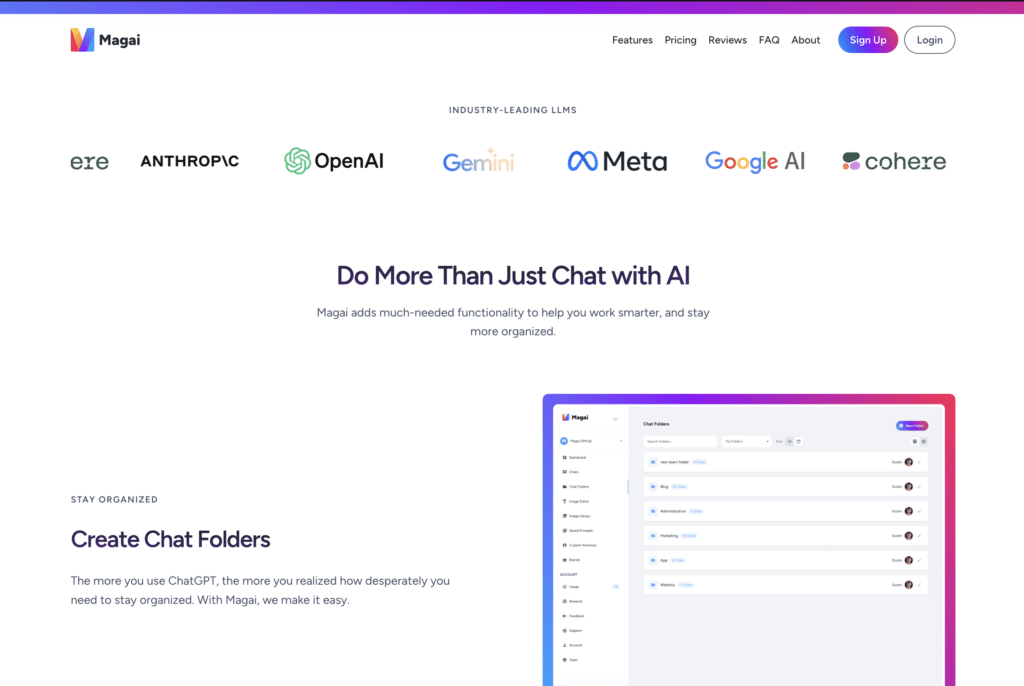
Have the Best of All Worlds with Magai
To recap, we’ve explored the strengths and weaknesses of various AI models, including their capabilities in creativity, accuracy, cost-effectiveness, real-time information access, and contextual understanding. We’ve also discussed the trade-offs between unmoderated and moderated models in terms of freedom of expression and responsible AI development.
Now, let’s talk about Magai, your ultimate AI companion. Why? Because it makes choosing the right LLM even easier. Magai is the one app that gives you access to all of the most popular LLMs in one place. Instead of maintaining 10 different app subscriptions or logins, Magai allows you to have one. Think of Magai as your friend in the world of AI, always there to assist you with your projects and ideas. With Magai, you get:
- All-in-One Convenience: No more juggling multiple AI apps and subscriptions. Magai brings together a range of powerful AI models under one roof, making your life easier.
- Flexibility at Your Fingertips: Need to generate creative content? Check. Want accurate information? Done. Magai lets you choose the best model for the job, and switch effortlessly between them as needed.
- Seamless Integration: Magai’s user-friendly interface makes it a breeze to integrate AI into your workflow. No complex setups or coding required – just start chatting!
- Constant Evolution: Magai is always growing and improving, bringing you the latest and greatest AI models as they emerge.
Not to mention, Magai gives users an Auto feature which will select the best AI model based on your prompt. This way you don’t have to think about choosing the right LLM, Magai will figure it out for you!
With Magai by your side, you can unlock new levels of productivity, creativity, and innovation. It’s like having a team of AI experts at your disposal, ready to help you conquer any challenge that comes your way. So, why settle for less when you can have it all with Magai?
Choosing the Right LLM Isn’t So Hard After All
Understanding the strengths and weaknesses of different AI models is crucial for maximizing their potential. By carefully considering the trade-offs between creativity, accuracy, cost, and ethical implications, you can choose the right LLM for your specific needs and unlock a world of possibilities.



